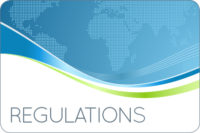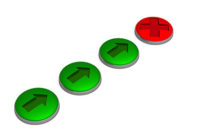http://www.fsis.usda.gov/OPPDE/rdad/FRPubs/2011-0009.pdf
Although FSIS solicited comments on the procedures, FSIS has already followed these procedures in the past and likely will continue to do so in the future.
As an initial matter, the traceback and recall procedures described below are not limited to FSIS positive findings. The procedures will apply if the sample was analyzed by another federal laboratory or a state laboratory. Although not expressly mentioned in the Notice, FSIS has already used these procedures when a private third-party laboratory had a credible positive result for E. coli O157:H7.
Traceback procedures
FSIS will now conduct traceback activities when an agency sample for E. coliO157:H7 yields a presumptive finding. Previously, FSIS would not begin such activities until after the sample confirmed positive.[1]
Under the new procedures, EIAOs will visit the establishment where the positive product was manufactured. Unless the agency determines the contamination likely occurred at the establishment where the sample was drawn, it will identify the raw materials used to make the positive product and trace the raw materials upstream to their source. At the suppliers, the EIAOs will gather information as to the use of antimicrobials, prevention of cross-contamination and sanitary conditions. In addition, the EIAO will review establishment E. coliO157:H7 sample results at the supplying establishment to determine if there was a high event period (HEP). Based on the information gathered, the district manager will make a determination as to whether the supplying establishment shipped any adulterated product. If so, the DM will contact the recall management staff (RMS).
Recall procedures
Whether a recall of supplier’s product is requested will depend on whether certain conditions are met: (1) the agency determines cross-contamination was unlikely to have occurred at the grinding establishment; (2) the grinder did not combine multiple source lots in creating the positive product; (3) the sole source supplier (or downstream users) split the implicated lot[2]before sending it to the establishment where the positive sample was found; and(4) some portion of the split lot was sent for further processing (other than to a federally inspected establishment for full lethality).
In terms of the impact these new procedures will have, the Notice summarizes FSIS data on the 65 E. coliO157:H7 ground samples for calendar years 2009 and 2010. Of these positives, 29 were at establishments that received sole source products from outside. Based on this data, there would have been potentially 29 recalls under the new recall procedures based on FSIS sampling. As noted above, FSIS will use these procedures when there is a credible third-party positive, which will increase the potential number of recalls generated.
Although these recall procedures only apply to sole source positives; to address situations where there are multiple sources, FSIS plans to conduct a study to test remaining unopened containers or purge material for E. coliO157:H7 at the establishment that produced the positive ground sample in an attempt to identify which of the suppliers present in the blend may have been the source of the ground positive.
[1] Given most presumptive findings are confirmed within 24-48 hours, it is unlikely any enforcement action will be taken until confirmation.
[2] The new procedures do not redefine or otherwise address what constitutes the implicated lot. That determination would be made under existing policies and the supplier’s lotting procedures.






Report Abusive Comment